Stories I captured behind a Canon EOS R7.
Photojournalism

Geoscientists Helen Dulfer and Sam Kelley hike up Ireland’s Wicklow Mountains on April 14. They collected rock samples from bedrock and boulders that were deposited by the British-Irish Ice Sheet during the last ice age to understand abrupt climate change in the future.
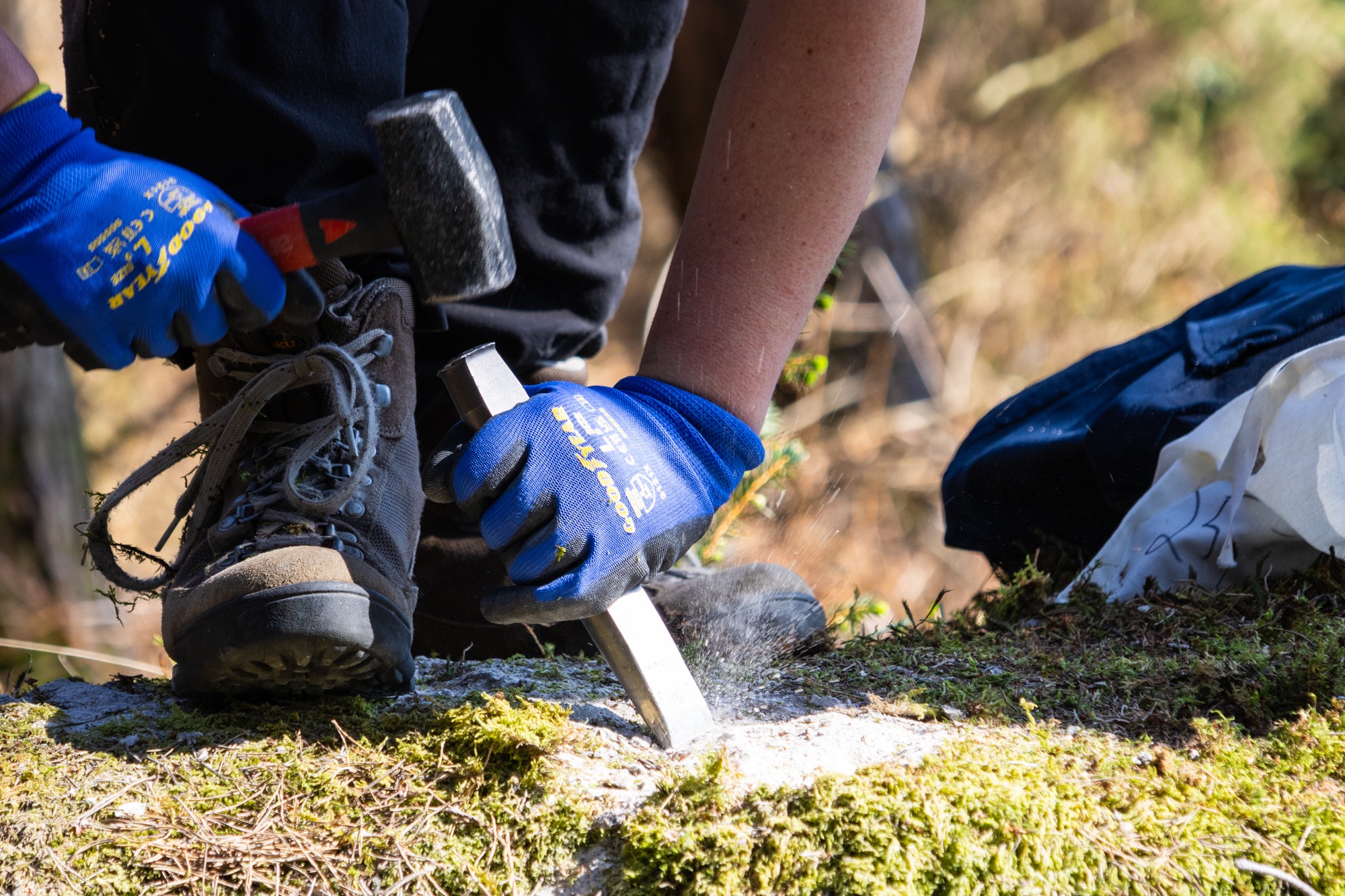
Postdoctoral researcher Helen Dulfer chisels quartz from a boulder in Ireland’s Wicklow Mountains. The gray-colored quartz at the surface of the rock contains a radioactive isotope called beryllium-10 that forms from cosmic rays.
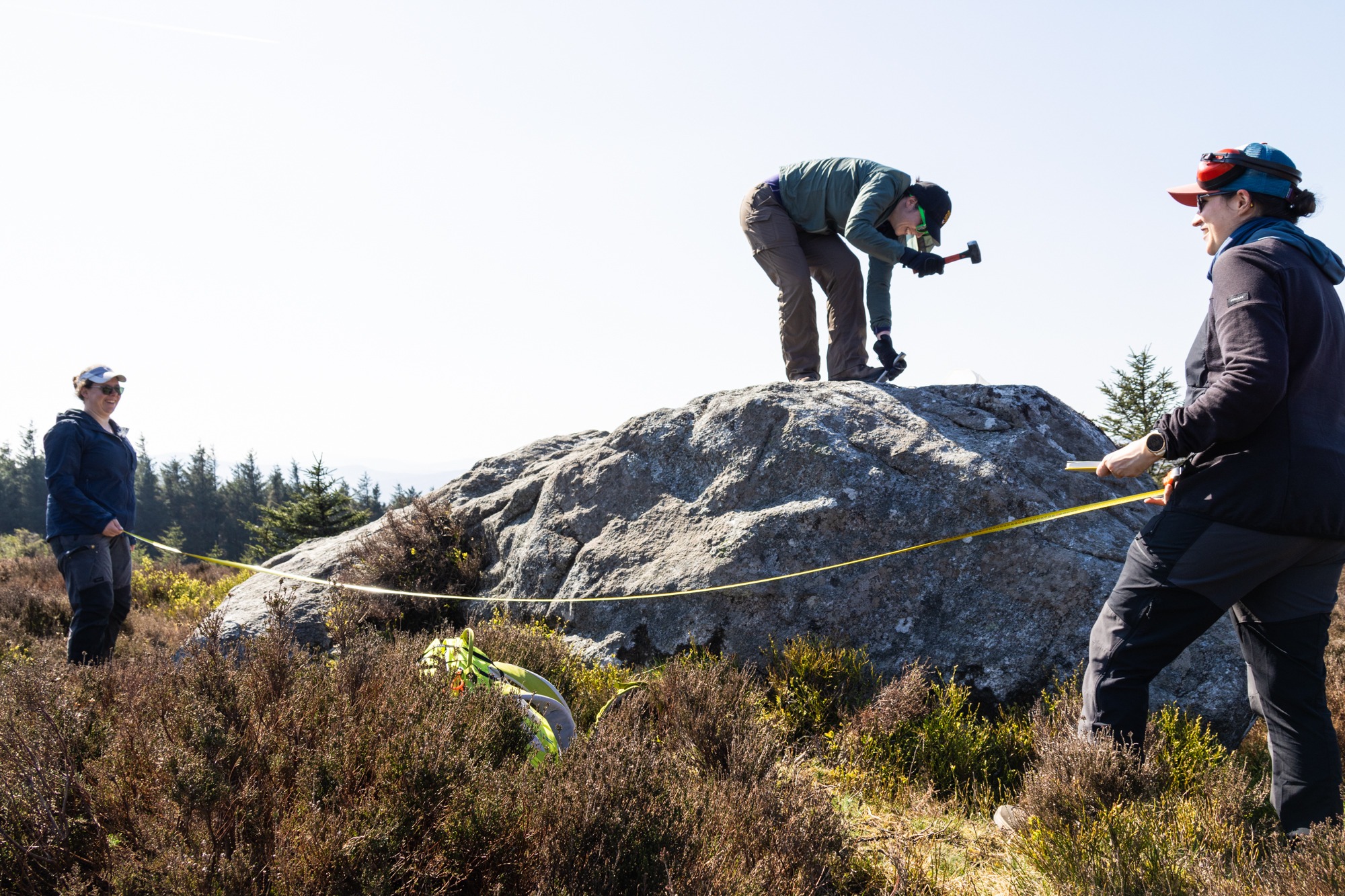
Geoscientists (left to right) Helen Dulfer, Margaret Jackson and Apolline Mariotti from Trinity College collect rock samples from a boulder April 10 in Ireland’s Wicklow Mountains. With each sample collected, the team used a measuring tap to record the boulders’s dimensions as part of their field notes.
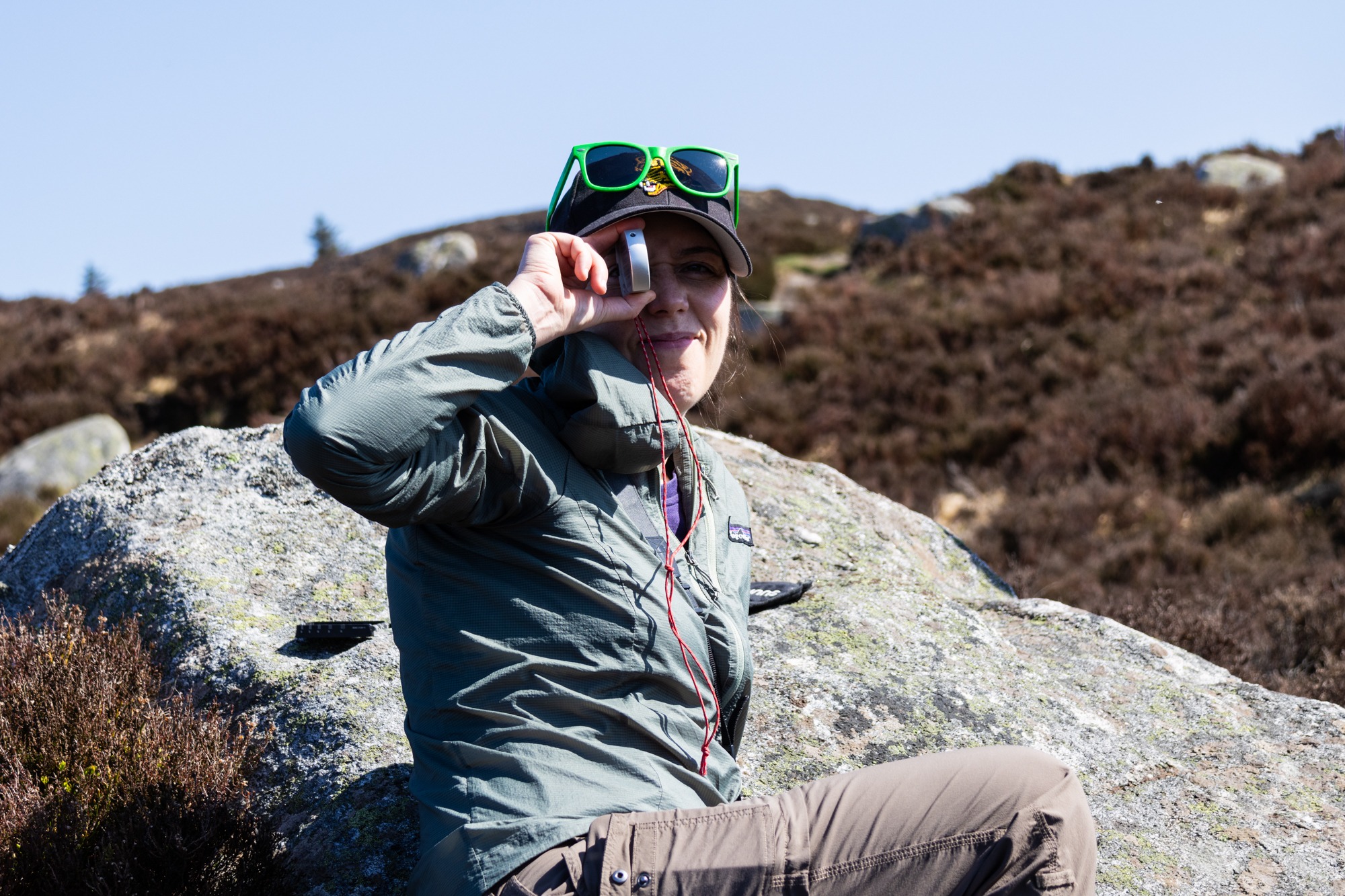
Margaret Jackson, an assistant professor of geography at Trinity College and co-principal investigator, looks through a clinometer April 10 in Ireland’s Wicklow Mountains. Jackson used the metal instrument to determine the cosmic ray shielding around the boulder’s location.

Helen Dulfer uses an angle grinder to cut into a boulder April 10 in Ireland’s Wicklow Mountains. She used the electric tool to draw perpendicular lines into the rock before using a chisel to fully remove the rock sample.
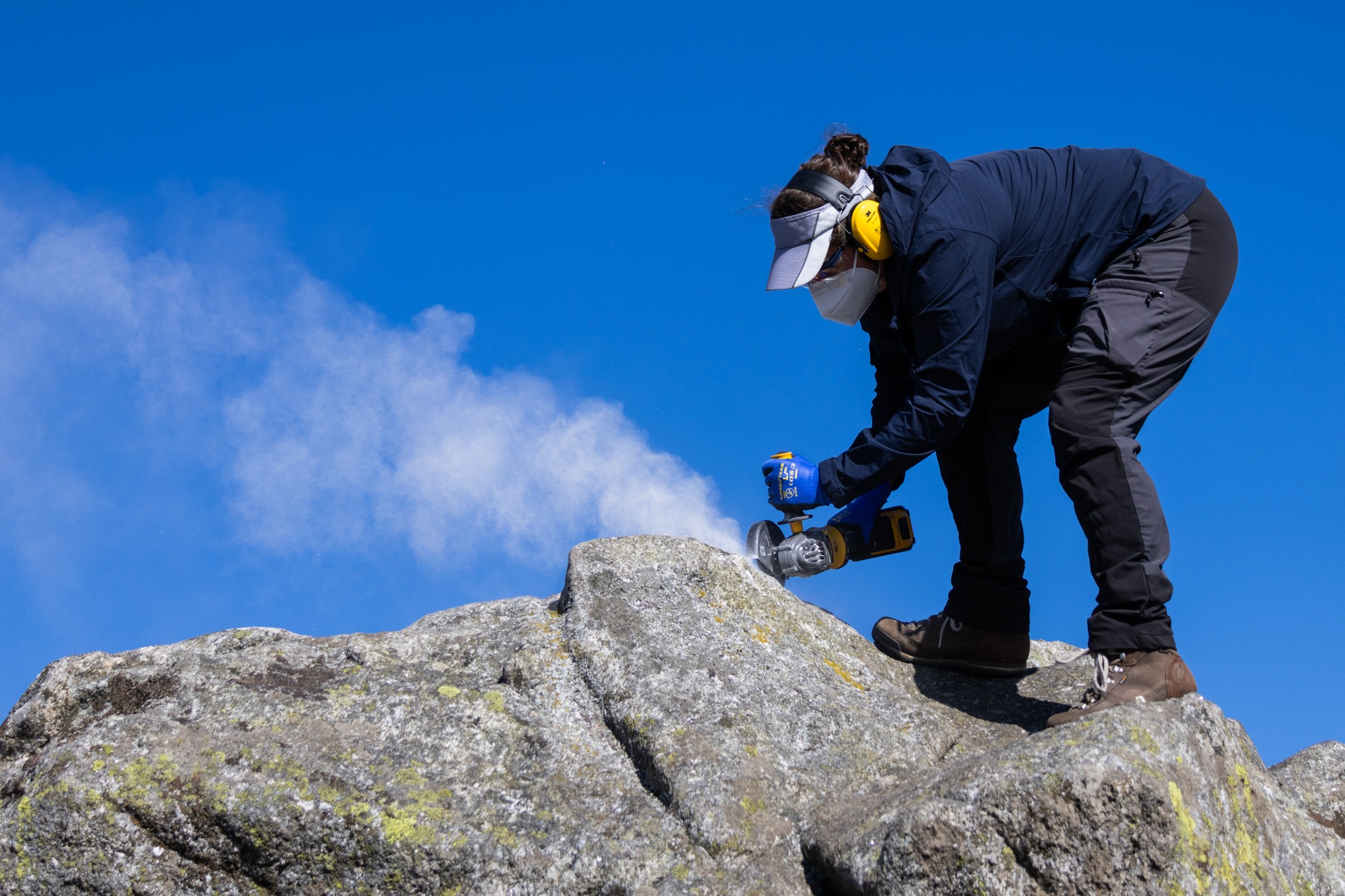
Helen Dulfer uses an angle grinder to cut into a boulder April 10 in Ireland’s Wicklow Mountains.
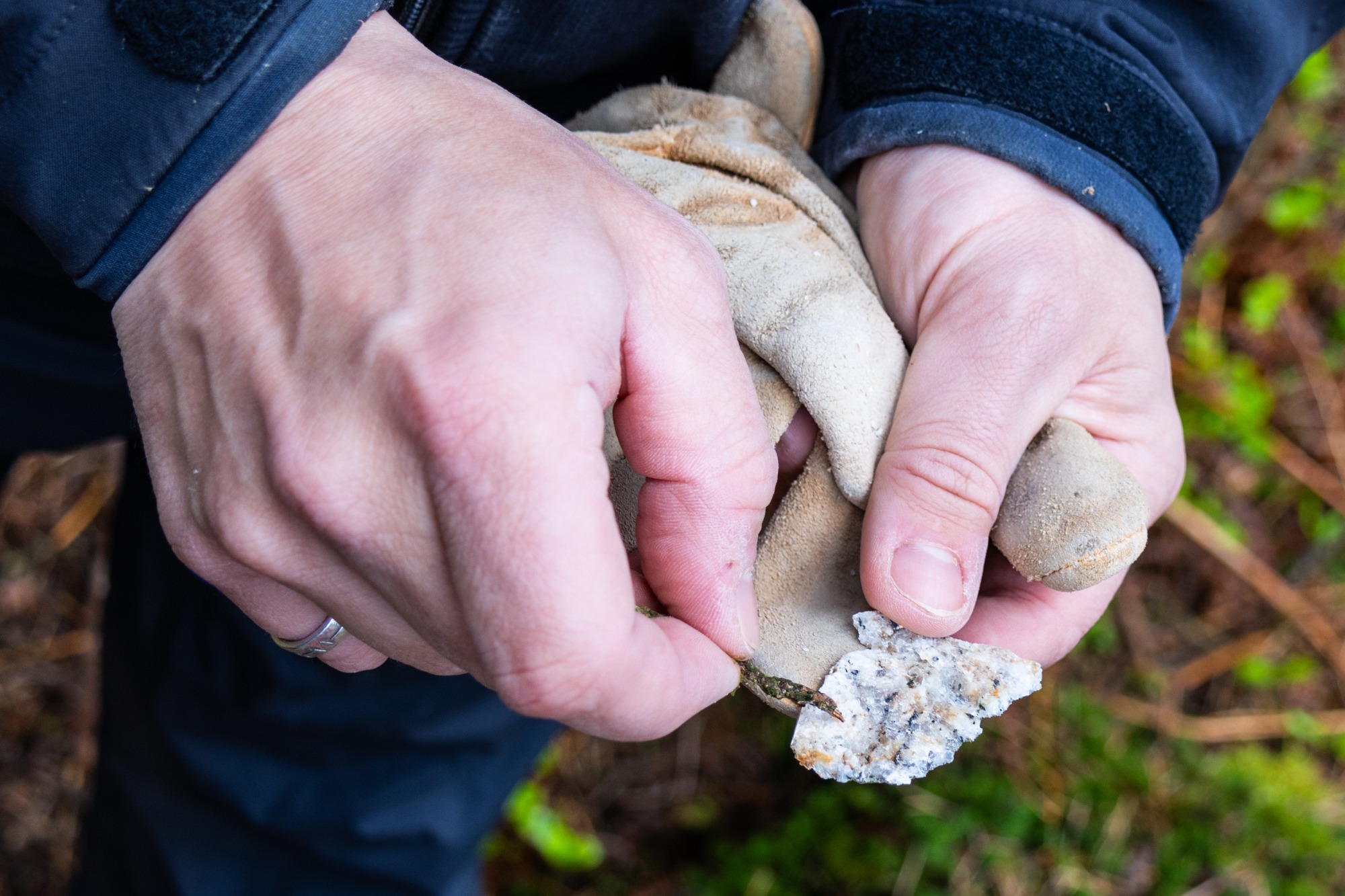
Sam Kelley, a quaternary geology lecturer at University College Dublin and co-principal investigator of the research, poses for a photograph April 14 while holding a rock in Ireland’s Wicklow Mountains.
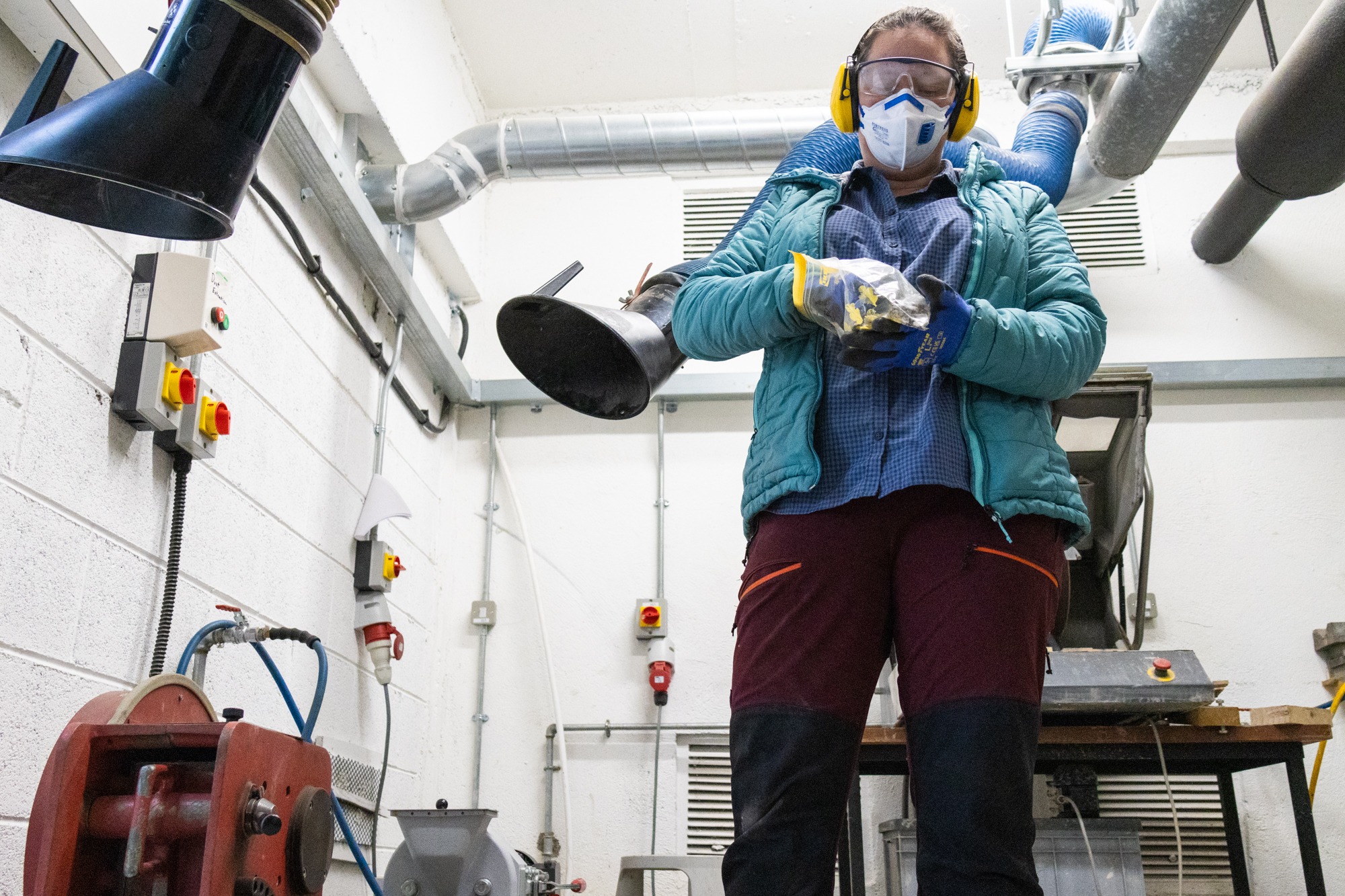
Helen Dulfer prepares the rock samples into a jaw crusher machine April 22 at the University College Dublin. This process separates the quartz from the rest of the rock to help the cosmogenic nuclide dating process run more smoothly.

Students raise their hands March 10 as horticulture educator Nancy Kuhajda speaks in the woods of Joliet’s Pilcher Park Nature Center. The fourth grade students arrived at the first day of the immersive Kids n Nature Adventure program after school.
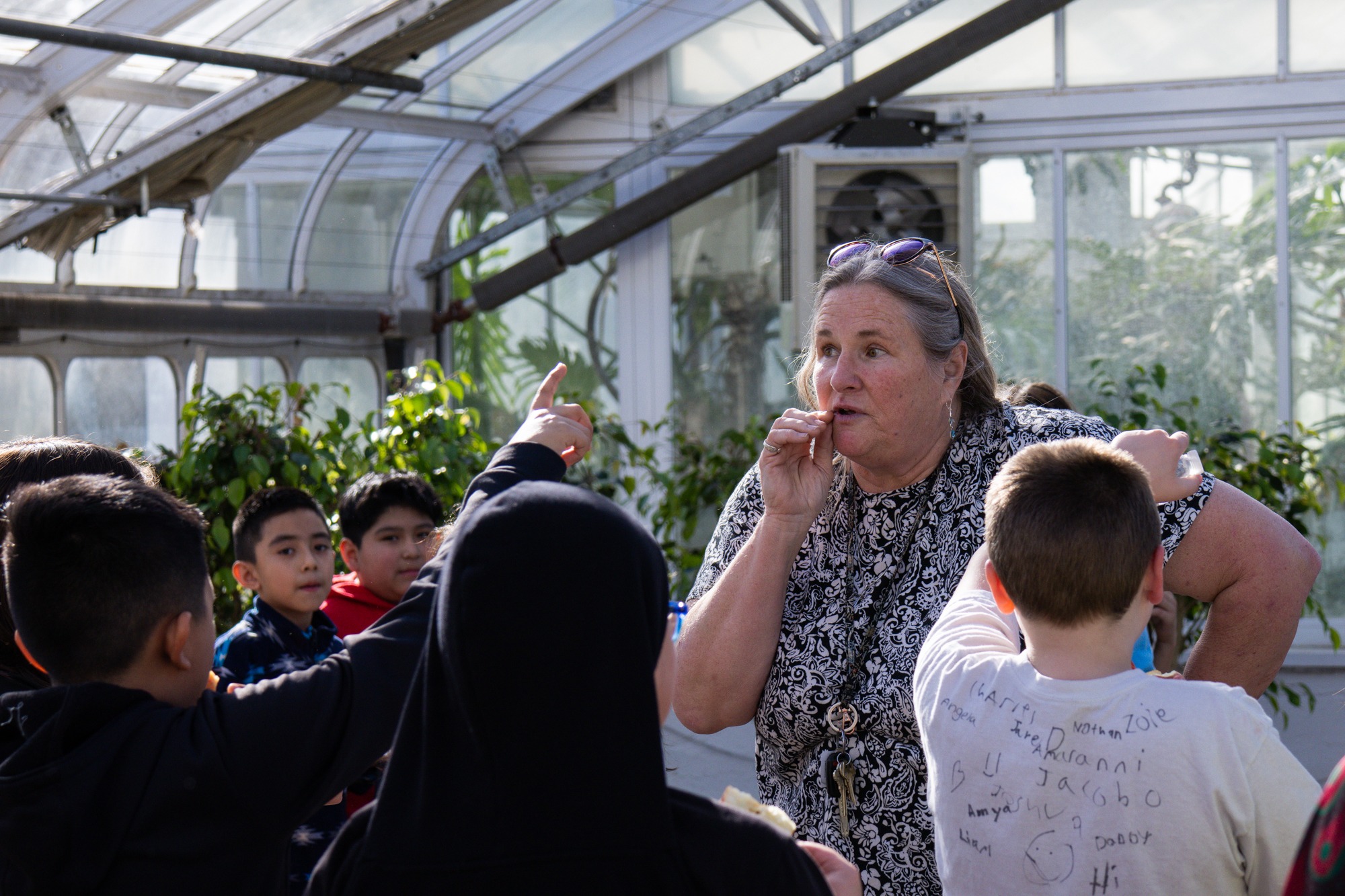
Horticulture educator Nancy Kuhajda motions a “hush” gesture March 10 inside Joliet’s Bird Haven Greenhouse.

Almost three dozen students head out into the woods of Pilcher Park Nature Center.
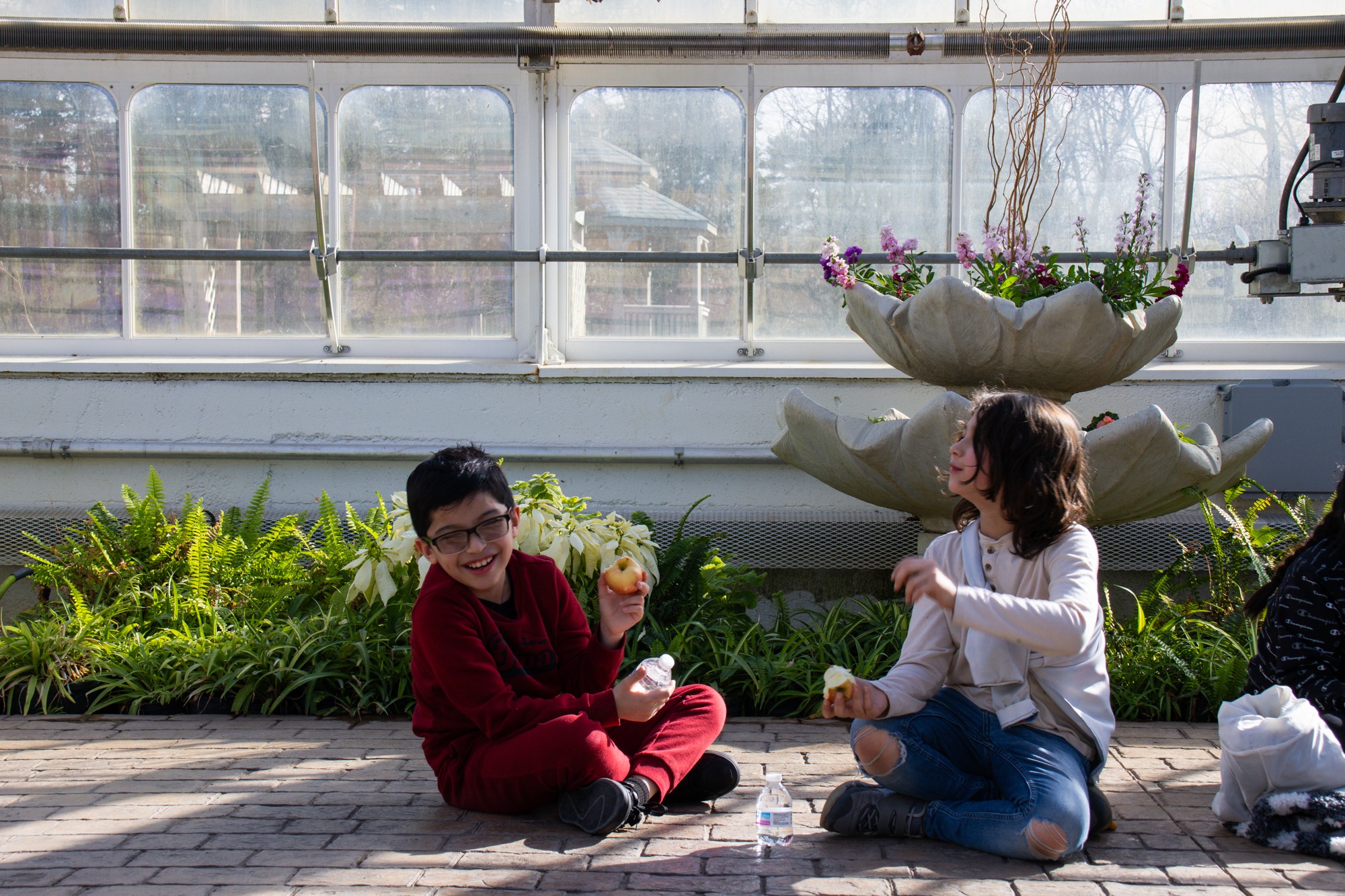
Students at M.J. Cunningham Elementary School laugh as they chatter during their snack break in Joliet’s Bird Haven Greenhouse.

Horticulture educator Nancy Kuhajda and naturalist Ryan Schoeling pose for a photograph March 10 under a gazebo near Joliet’s Bird Haven Greenhouse. The teachers reconvened for the first day of the Kids n Nature Adventure program in its 22nd year.
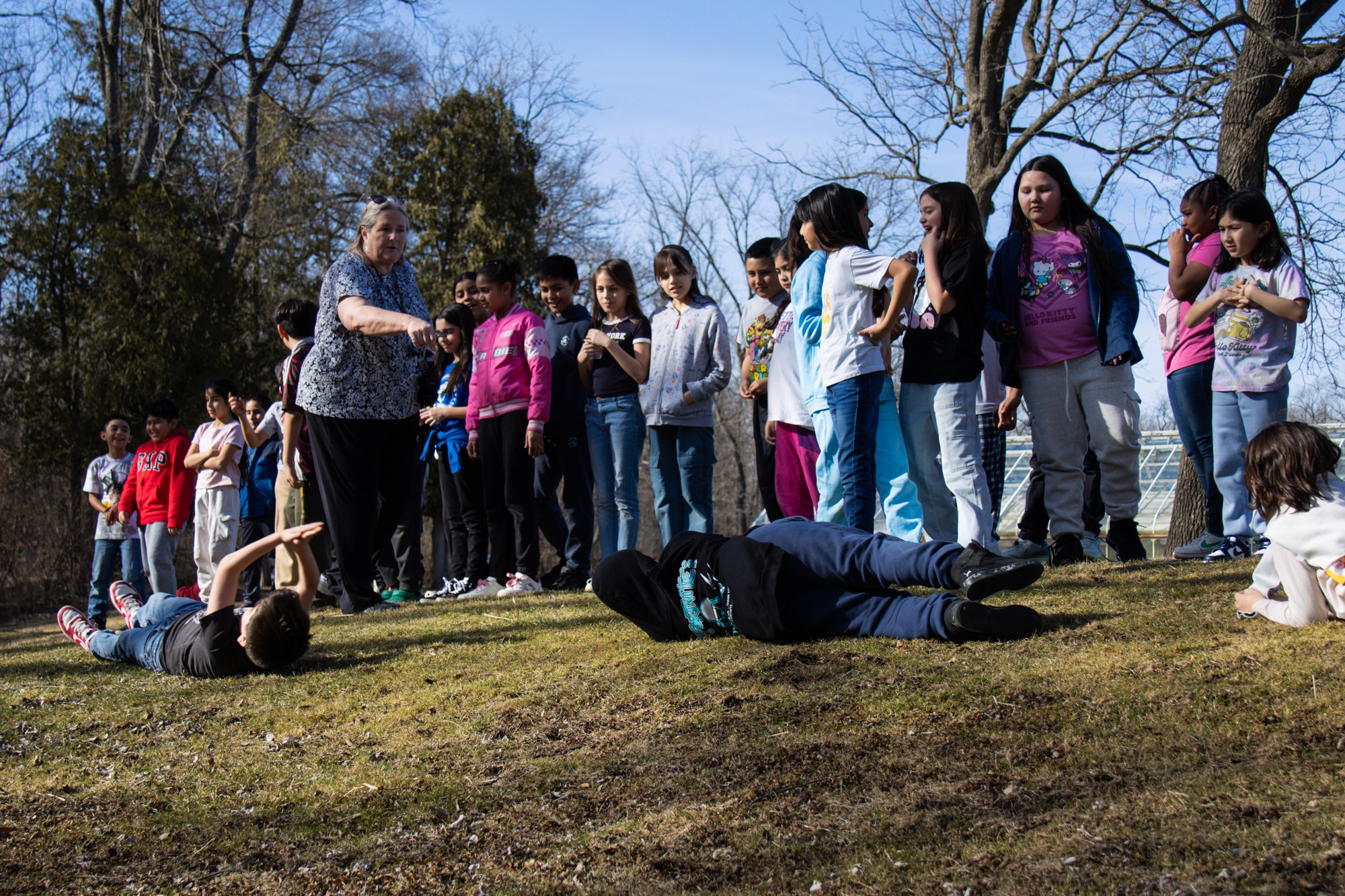
Nancy Kuhajda instructs students to roll down a small hill March 10 near Joliet’s Bird Haven Greenhouse to help them connect with the environment. It’s “all part of the nature immersion,” Kuhajda said.

Prior to students’ enrollment of the Kids n Nature Adventure program, Kuhadja told parents to send their children wearing “play clothes.”
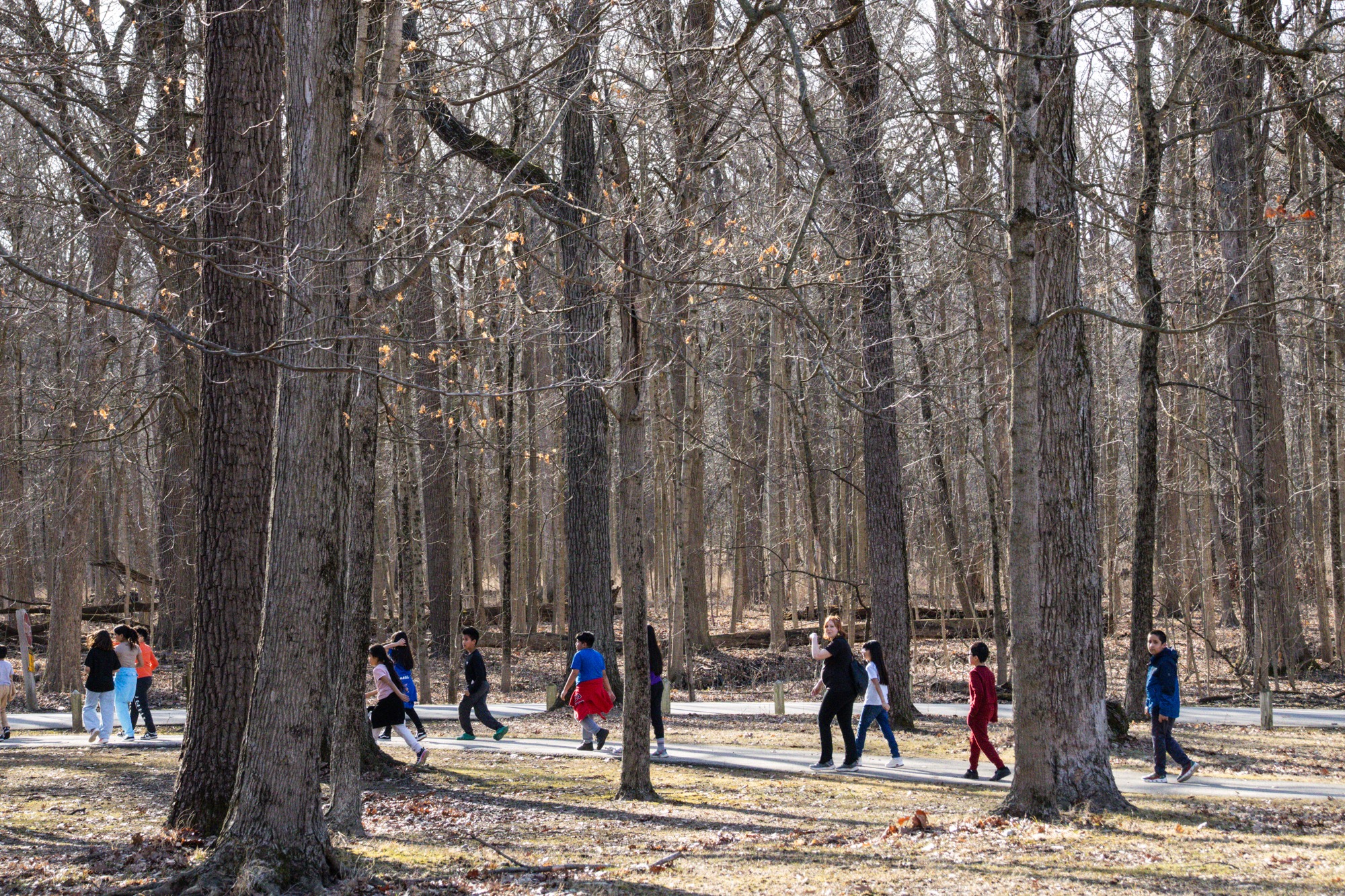
Some 40 students head into the woods of Joliet’s Pilcher Park Nature Center. The nature center is over 640 acres of land, including the Bird Haven Greenhouse.

Naturalist Ryan Schoeling instructed the students to raise two fingers above their heads in the woods of Joliet’s Pilcher Park Nature Center after he spotted deer tracks on the ground. “And how we can tell is deer are what’s called an ungulate, which is an animal that has hooves, like a horse,” Schoeling told the students. “But deer have two hooves, so it’s like taking your two fingers, they fit perfectly in that track.”
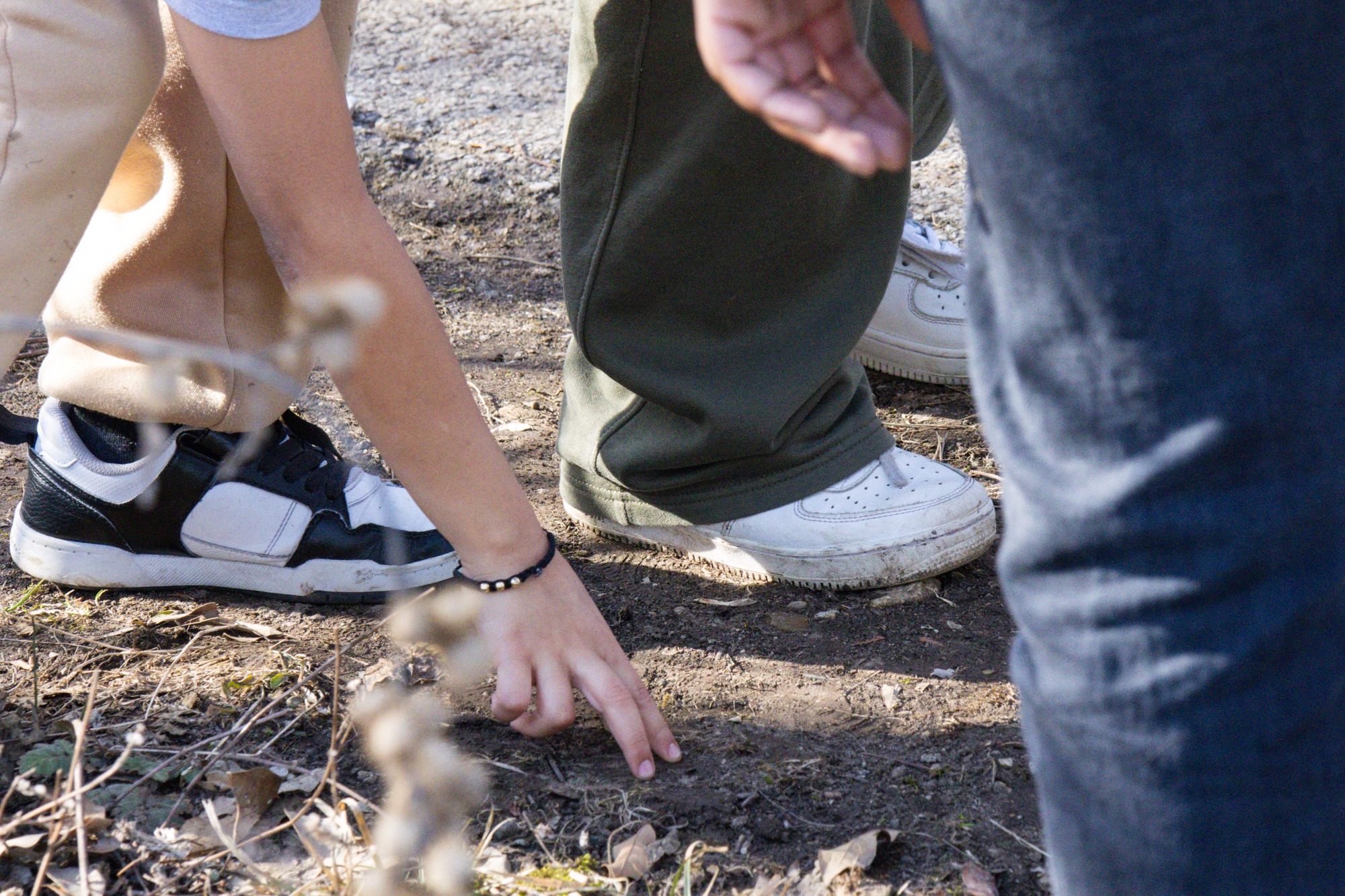
Students took turns fitting two fingers into the deer tracks in the woods. The immersive Kids n Nature Adventure program encourages students to be curious about wildlife, even if they never thought much about it before, Kuhajda said.
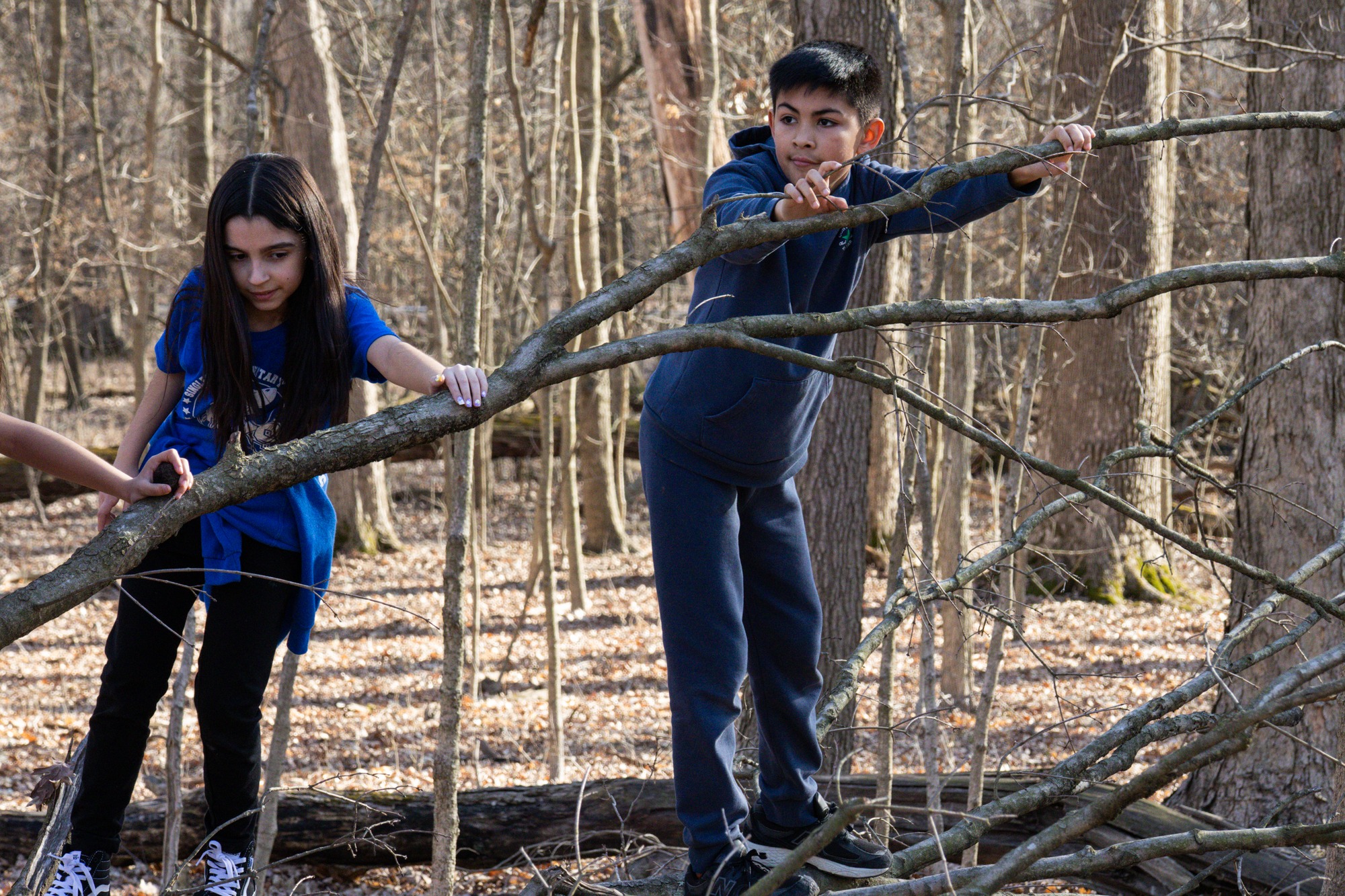
Two students at Isaac Singleton Elementary School climb on a fallen tree in the woods of Joliet’s Pilcher Park Nature Center. “One of the other works that goes along with letting kids play in nature shows the value of risk taking,” said Andrea Faber Taylor, a horticulture and landscape design professor at University of Illinois Urbana-Champaign. “That’s missing from a lot of children’s play now when you’re in a green space.”
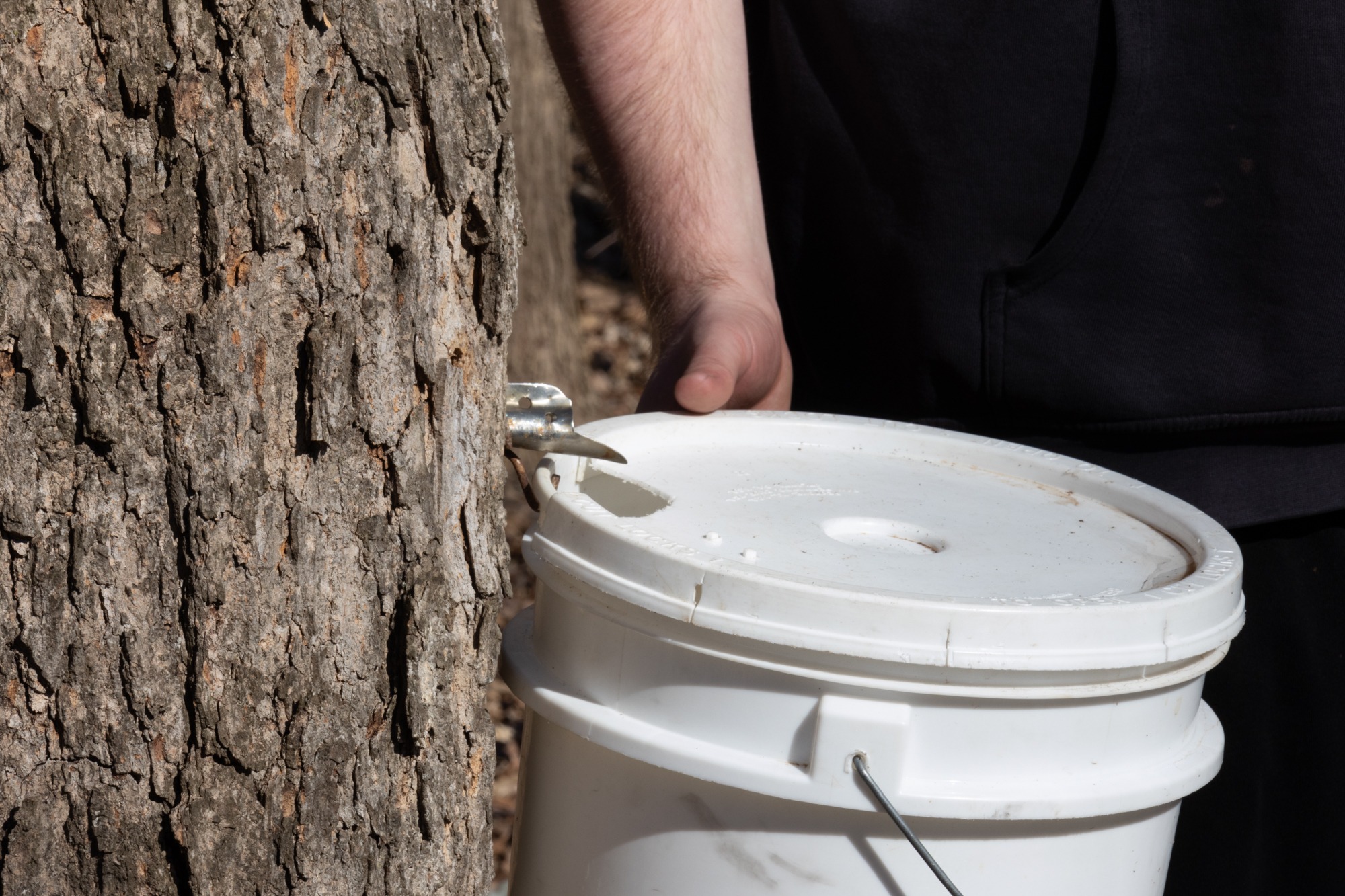
Ryan Schoeling demonstrated how the staff usually get sap from a maple tree in the woods on March 17, the start of the second week of the nature program. Maple sap is about 3% sugar, which would taste similar to a glass of water, Schoeling told the students.
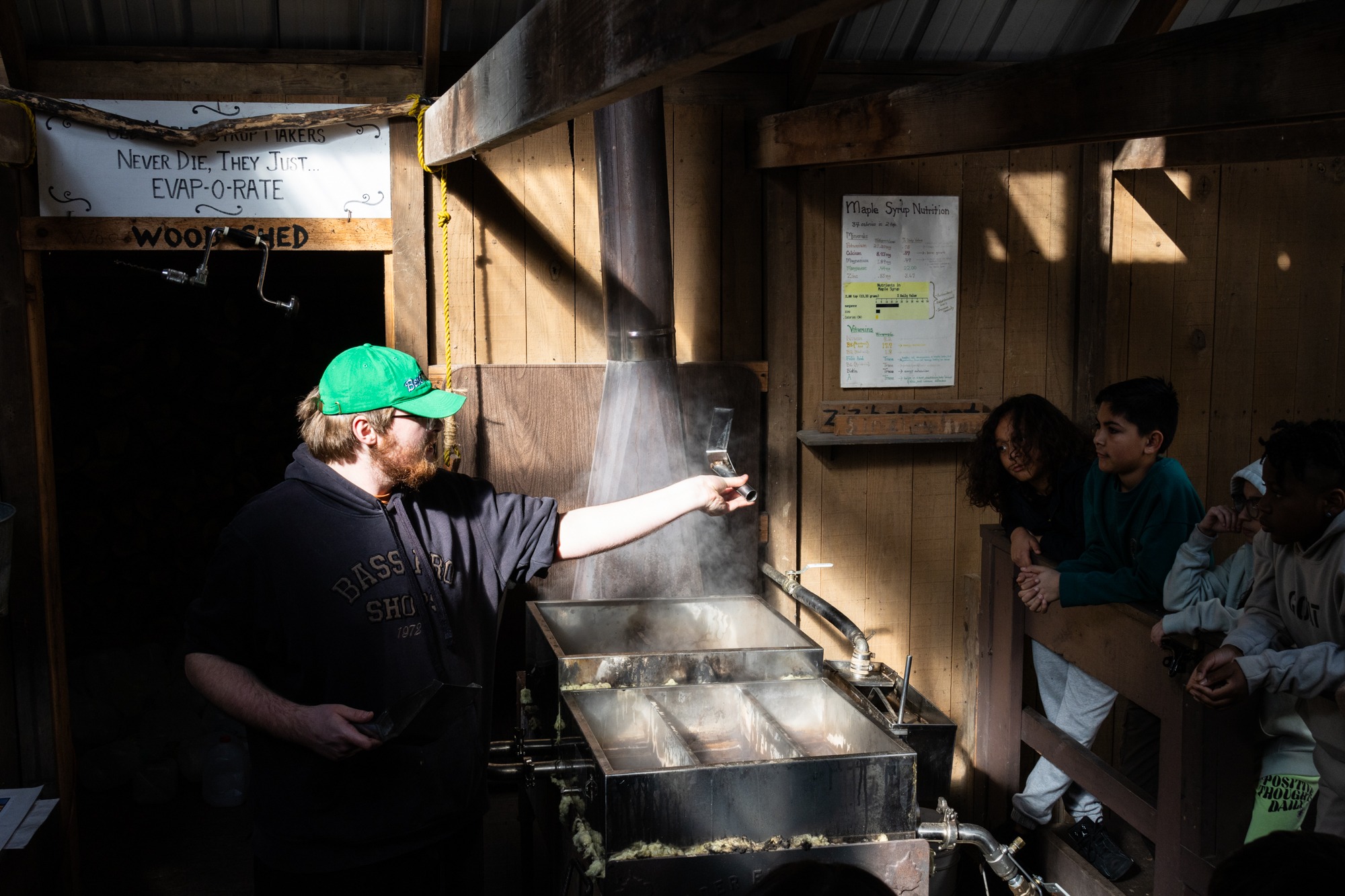
Ryan Schoeling showed the kids burnt maple sap after it’s heated up in the evaporator March 17 in the Sugar Shack of Joliet’s Pilcher Park Nature Center. “You see all that stuff in there?” Schoeling said. “That’s a combination of carbon, bark, sticks, leaves and lobes. That’s why we have that filter, because we don’t want that stuff going in our syrup, right?”

Looking at the students through a bottle of Grade A Amber syrup, Schoeling told them that cooking the sap longer results in dark amber syrup which is sweeter but sells for less.
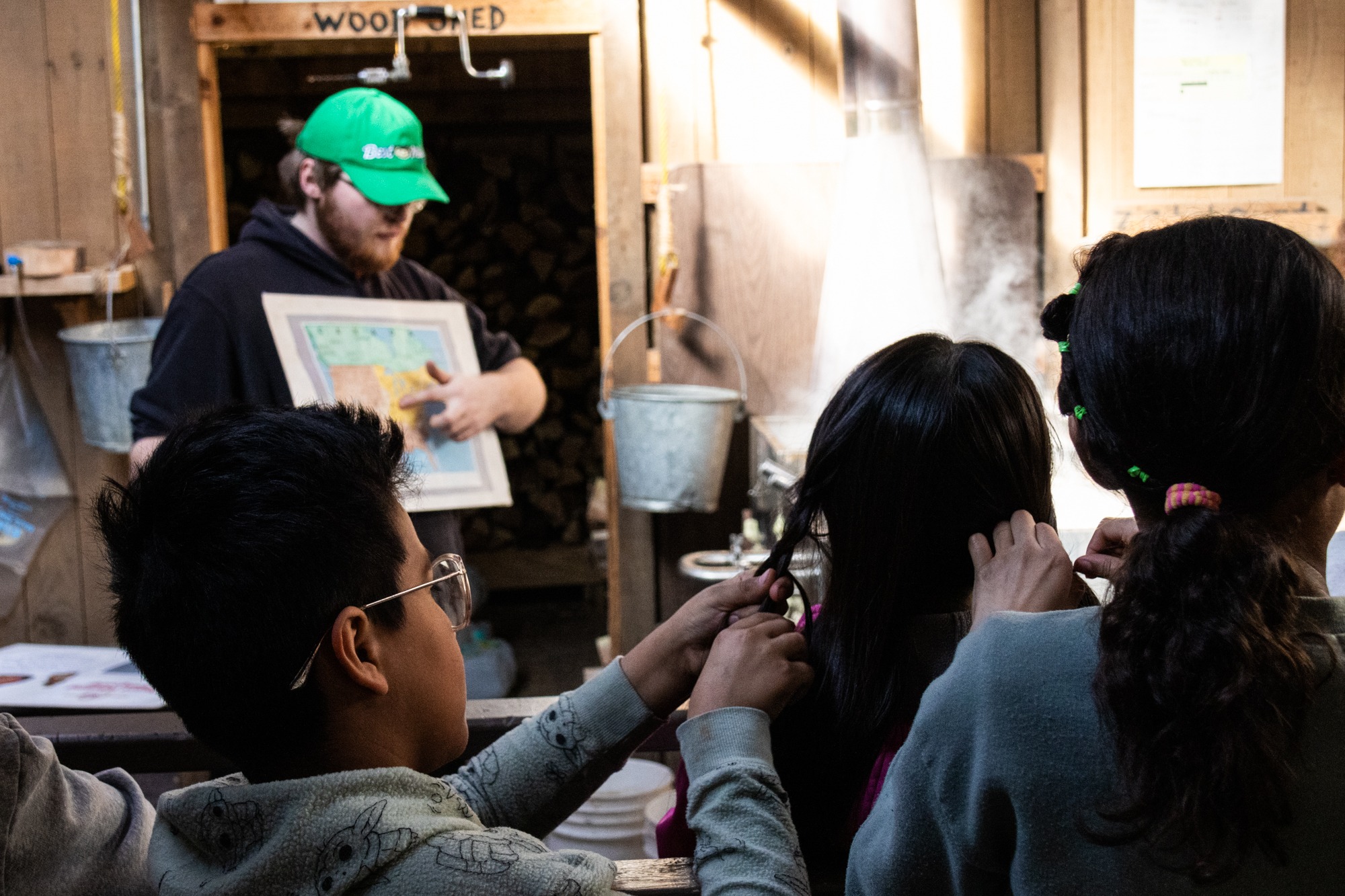
Two students braid a girl’s hair inside the Sugar Shack in Pilcher Park Nature Center. The 27-week program has invited elementary school students from all over Joliet every year to form close friendships with one another.

Chef Zubair Mohajir sets the Singapore soft shell chilli crab dish, his favorite from Wicker Park’s Lilac Tiger menu he created, on the counter Feb. 20. The upcoming contestant for Top Chef and Chopped transformed his former brick-and-mortar space into a Southeast Asian street foods restaurant in 2023.

Chef Zubair Mohajir works alongside line cook Jacob on Feb. 20. The duo wore matching purple corduroy hats that Jacob gifted to the chef as a nod to the restaurant name, the Lilac Tiger.
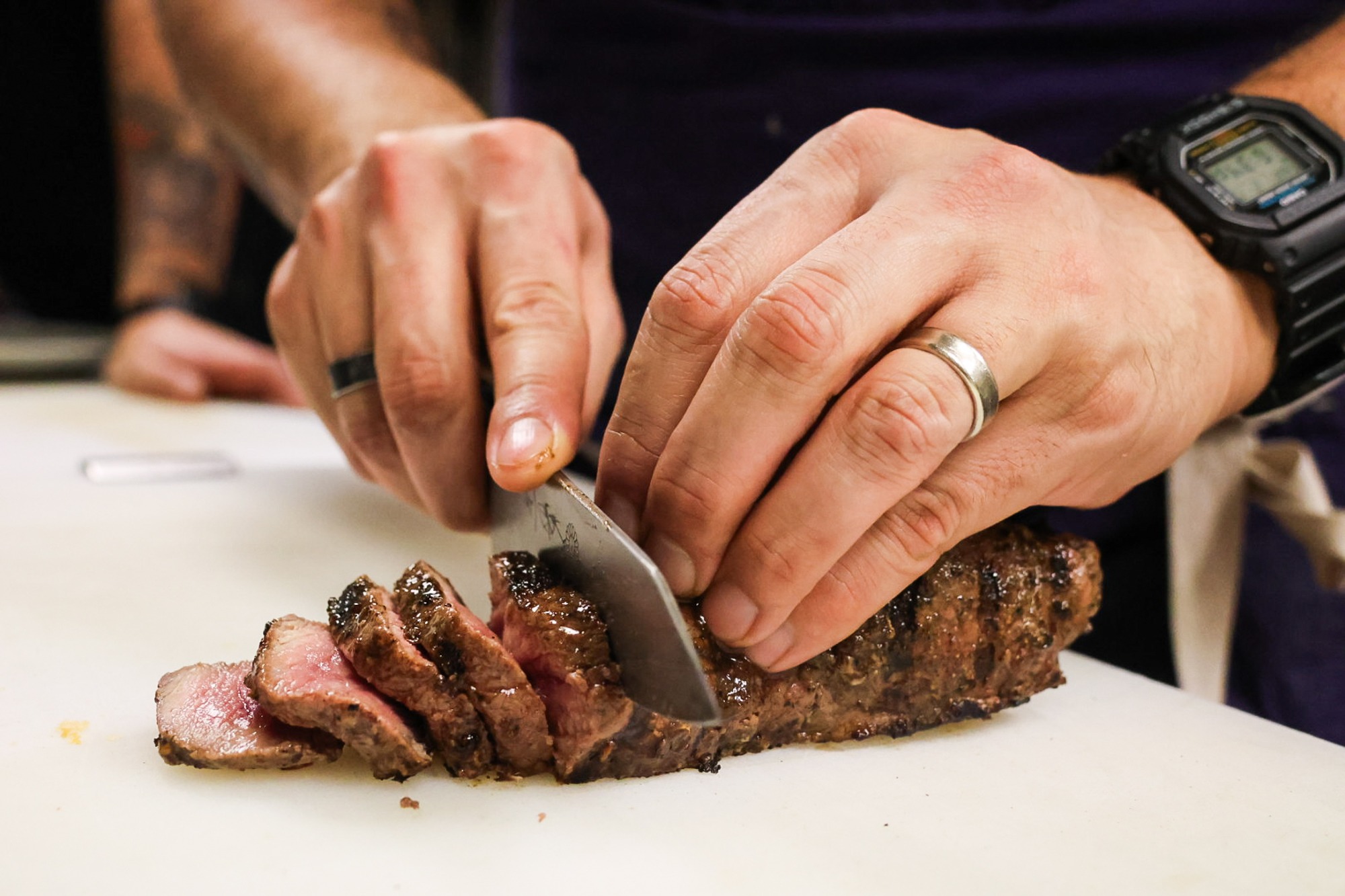
Chef Zubair Mohajir poses for a photograph Feb. 20 at Wicker Park’s Lilac Tiger with a wedding ring on his hand as he cuts a steak. The chef and his wife, who he met at a wedding, have been married for 14 years.

Chef Zubair Mohajir poses for a photograph Feb. 20 at Wicker Park’s Lilac Tiger with a plate of steak frites on vindaloo sauce. The secret to the perfect steak is letting it rest for five minutes after cooking it on a charcoal grill, he said.

Chef Zubair Mohajir poses for a photograph Feb. 20 at Wicker Park’s Lilac Tiger with line cook Jacob at Lilac Tiger. The duo have been working together for two years.
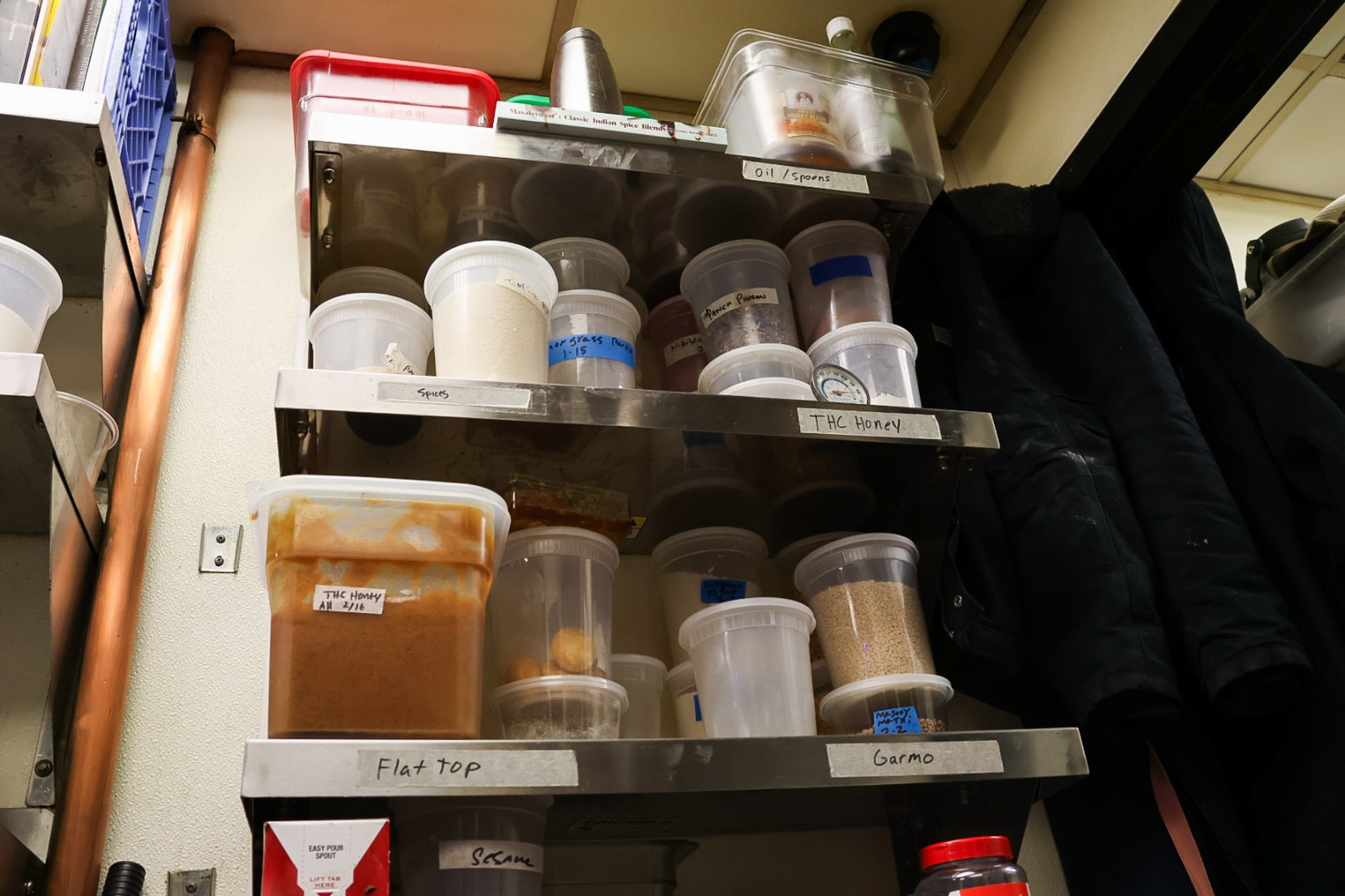
Plastic containers holding not-so-secret ingredients for the Lilac Tiger’s recipes sit on shelves Feb. 20. One container, labeled “THC Honey,” is the heart of the late-night tandoori honey chicken sandwich.

Chef Zubair Mohajir looks into the kitchen window Feb. 20 at Wicker Park’s Lilac Tiger. When business is slow, the chef usually walks around to get fresh air away from the hot kitchen.

Chef Zubair Mohajir cooks on the grill Feb. 20 at Wicker Park’s Lilac Tiger. Toward the front of the kitchen, line cook Jacob whipped up vegetable fried rice in a pan.
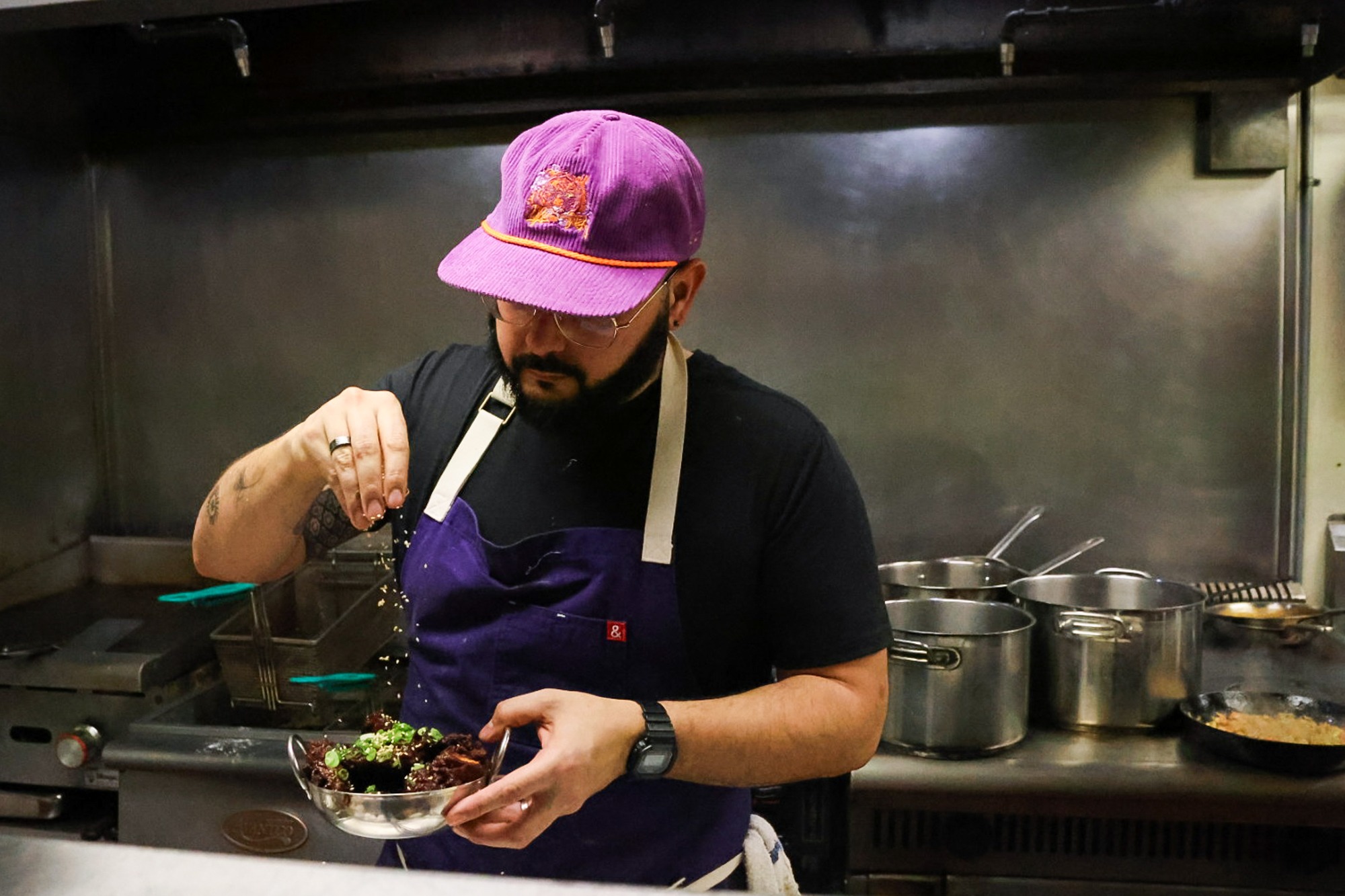
Chef Zubair Mohajir sprinkles sesame on the “Ferrani Special,” a dish he named after his 7-year- old son, on Feb. 20 at Wicker Park’s Lilac Tiger. The bowl of tandoori honey chicken was inspired by his son’s love for chicken nuggets.
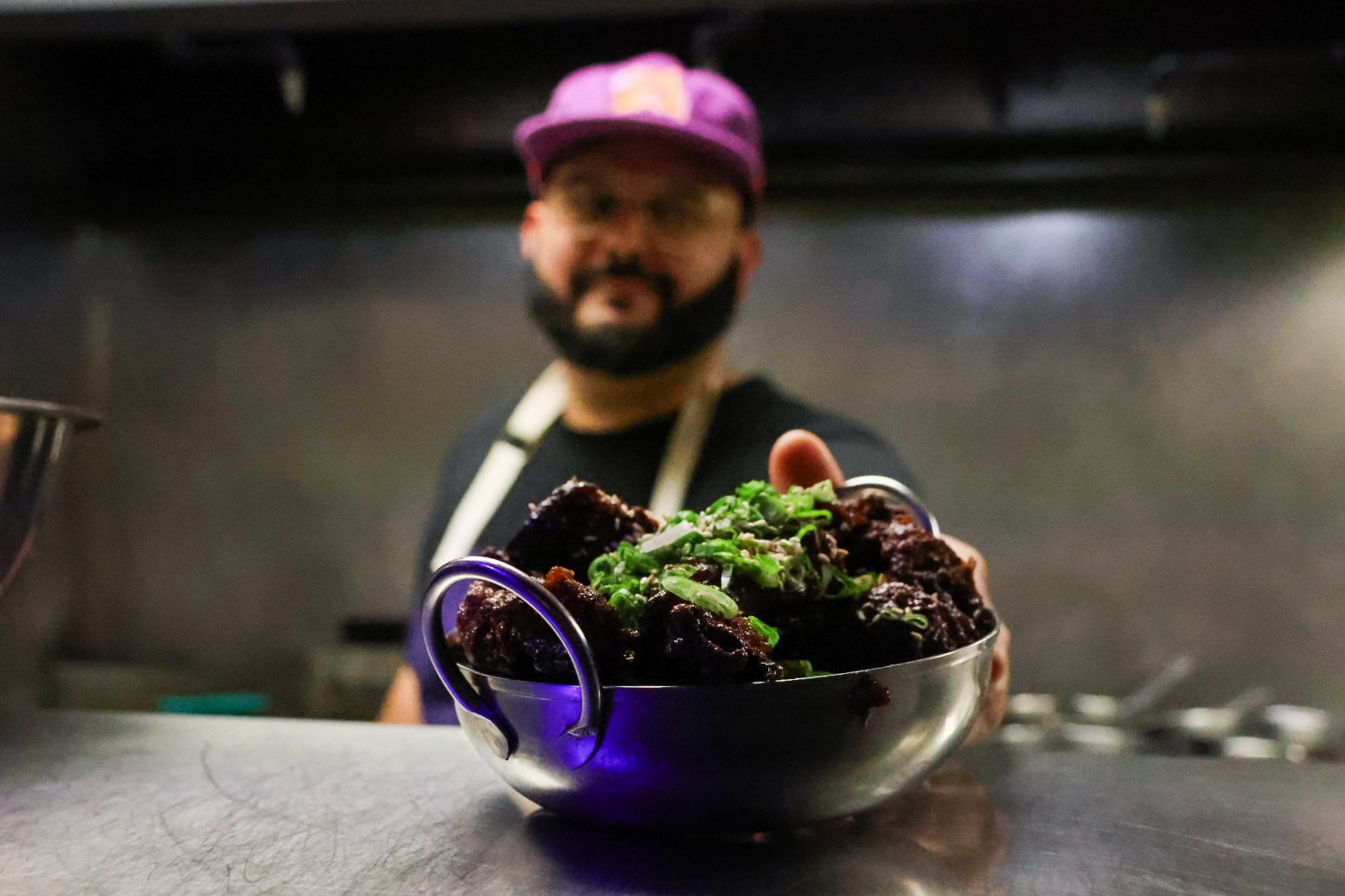
Chef Zubair Mohajir poses for a photograph Feb. 20 at Wicker Park’s Lilac Tiger with the “Ferrani Special,” a dish he named after his 7-year-old son. “I think chefs make great dads,” he said, “only if they really focus on being great dads.”
